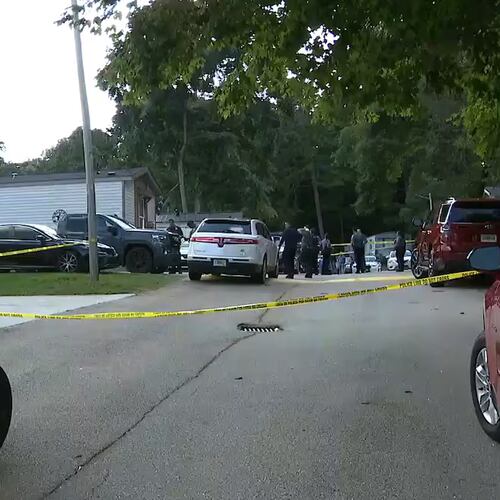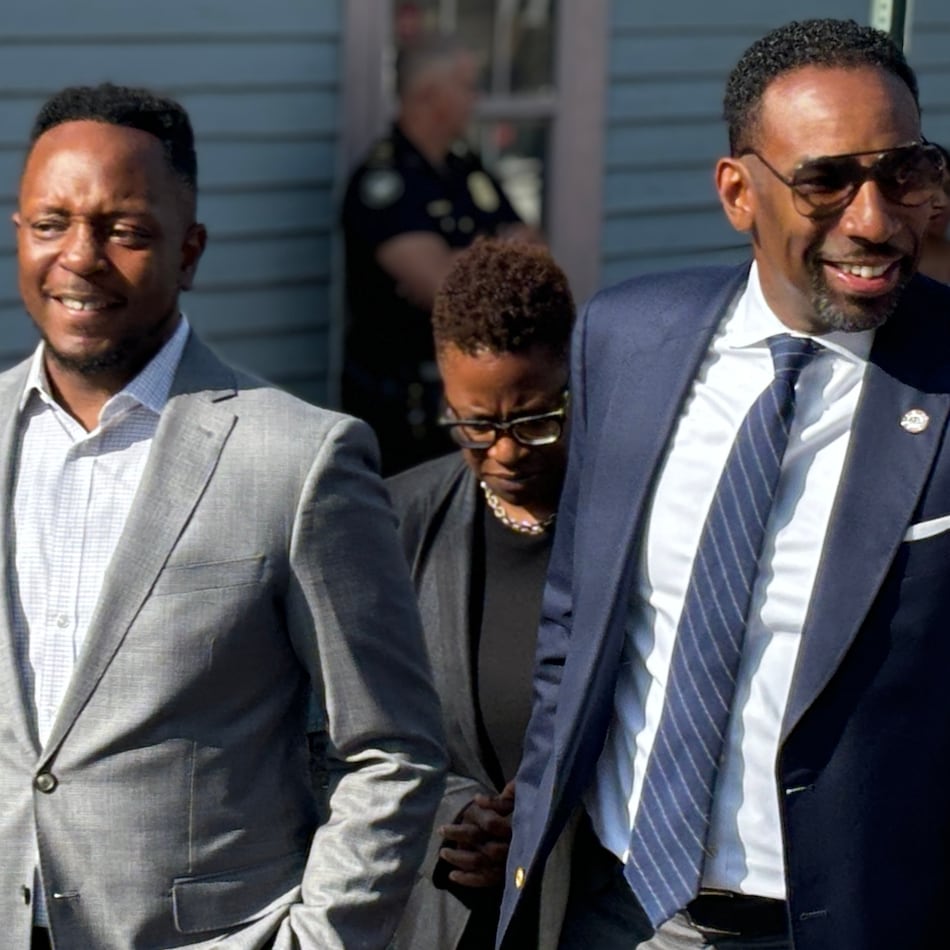The van waited on a residential street next to Perkerson Park over the course of two days with men inside. Some residents thought it a bit odd, but apparently no one reported it.
Almost noon on Saturday, Oct. 24, Dionta Browning pulled up at a stop sign. The van pulled in front of Browning and two men jumped out.
One, armed with an assault rifle, sprayed the front of the car with several bursts. The other man approached the passenger side firing a 9 mm handgun. Then they calmly drove off, leaving a dead, unrecognizable man in his smoking car as frightened residents ventured out to investigate. Thirty-one bullet casings littered the pavement.
Shootings in southwest Atlanta are hardly rare; there were at least two others last weekend. But this one — a gang-style hit in broad daylight near a public park — had the area buzzing.
“It seemed like some Mexican cartel stuff. Damn!” said Andre Johnson, who lives across the street, shaking his head as a couple of small boys played on his stoop. “I’m just glad no kids go hurt.”
Normally, the killing of Browning, a 29-year-old with a criminal record, would have barely registered in the media, except for the “Scarface”-style violence of his death.
But the issue of crime has dominated the run-up to Tuesday’s Atlanta mayoral election, starting with the January shooting of John Henderson, a popular bartender at Standard Food & Spirits on Memorial Drive in Grant Park.
That random crime coalesced residents in that gentrifying area. They Facebooked, organized, complained loudly to the media and put the issue front and center. Candidates took note, each vowing to out-tough their opponents. All said they’d hire more police; some would form more specialized, aggressive squads.
By contrast, this section of the Sylvan Hills neighborhood is withering with foreclosures, vacant homes and residents struggling just to hang on. It seems unlikely its residents, many of whom say they’ve been left to look out for themselves, could ever wage a public awareness campaign like Grant Park’s.
Tough times, more crime
Councilwoman Joyce Sheperd, who represents the district, said the shocking killing was the talk of last week’s neighborhood meeting. Some leaders say they hope the incident will convince residents to be more involved and vigilant.
“The mindset of shooting someone in the middle of the day when the sun is shining and children around, that tells you something about where we are as a society, where we are as a city,” she said. “There’s a whole different criminal mindset.”
Sheperd said Sylvan Hills residents are, once again, calling for police to move hard against street gangs, which have make their presence known in the city and are believed to have had a hand in the Henderson killing. Police have made no arrests and released no motives in Browning’s homicide.
Taft Washington said the killing, which took place down the street from his tidy brick home, is a case of criminals taunting the city. “They know police are scarce. They know no one’s around. They know they can do what they want,” he said.
Washington has lived for 22 years in the Sylvan Hills neighborhood just south of the woodsy, 50-acre Perkerson Park, perhaps one of the prettiest in the city. When they bought in 1987, “most people owned their homes, nice people,” said his wife, Mary. Adjacent neighborhoods have witnessed rejuvenation in recent years, but the recession, mortgage fraud and other economic woes have curbed that momentum.
The door and windows of Washington’s home are protected by burglar bars. His property is festooned with “No Trespassing” placards. He pointed to several vacant homes nearby — there are at least seven within a block — and displayed a spotlight he uses sometimes to illuminate prostitutes and shoo them away.
“They need to put the Red Dogs back in here,” he said, referring to Atlanta’s hard-nosed anti-drug squads.
Several residents interviewed by The Atlanta Journal-Constitution complained about police response in the area. Others said officers have chased young toughs away. A squad car rolled through the neighborhood several times last week while a reporter walked the area.
Seeking ‘nosy neighbors’
The neighborhood has had a difficult time mustering up the energy to fight back, Washington said, because of fewer “eyeballs” on the streets these days due to the vacant homes and “a lot of people who can’t get around. They’re sick. They’re old.”
Several residents were reluctant to talk. Even a Sylvan Hills community leader had second thoughts about having her comments printed, asking to keep her name out of the story. “It is difficult when speaking on record about gangs that have just performed a hit, if you get what I’m saying,” she wrote in an e-mail.
The city’s overall crime rate has dropped sharply over the years, with violent crime hitting its lowest point last year, down about two-thirds from a record high in 1990, a recent AJC analysis found. But it still ranks among the highest in the nation.
Dianne Bryant, chairwoman of Neighborhood Planning Unit-X, the zoning advisory board for the area that includes Sylvan Hills, believes crime numbers are down. “But the severity of the crimes is up,” she said.
“I’m not really paranoid or afraid. I walk down the street at night,” she said. “But I recognize a lot of people don’t feel that way.”
Bryant, like Washington, said the empty houses embolden potential wrongdoers. She said she will step down from her NPU post next month to help get more residents involved in becoming “nosy neighbors.”
Bryant believes she can organize and empower residents to take more responsibility for their neighborhood’s safety. Part of the challenge she faces is convincing residents to take action.
“So many people are disconnected. If a van was in front of my house for two days, I’d have a tag number,” she said. “These are the habits we need to teach people.
“It’s not where people should get a gun and lock themselves inside. The criminals need to change their habits. Not the residents.”
About the Author
The Latest
Featured


